- AI in Lab Coat
- Posts
- How AI Revealed Hidden Lung Damage from Severe COVID-19 Cases
How AI Revealed Hidden Lung Damage from Severe COVID-19 Cases
Is the world ignoring the ongoing consequences of COVID-19

It’s remarkable how COVID-19, which once held the world in its grip, has now faded from our memory. We have for the most part, moved on from lockdowns, social distancing, mask mandates, and even vaccinations.
A brief look at vaccination numbers from the start of the pandemic to today reveals that after 2023, the total count of administered vaccines has flatlined. Interpret this data how you will, but one thing is certain: we don’t view COVID-19 at the same level of danger as we once did.
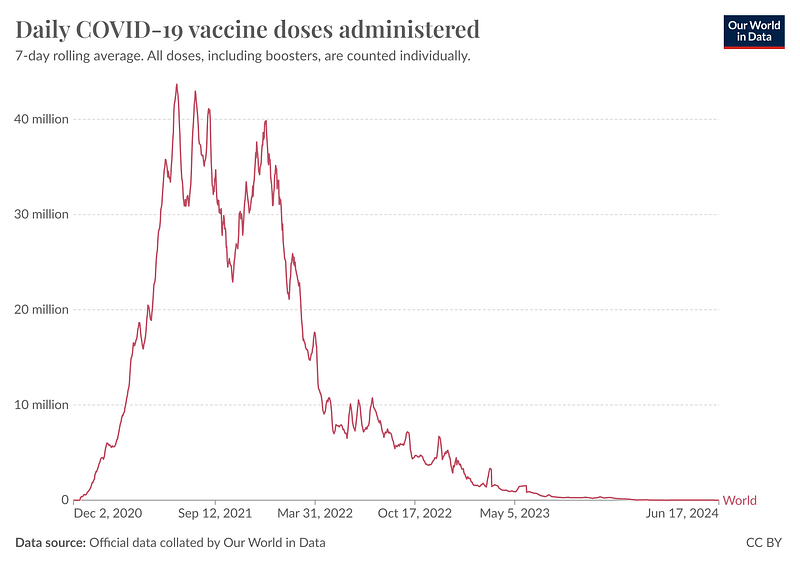
Image from Our World Data.
COVID-19 feels like it’s become a part of history — something we’ve moved past. Yet, the reality is quite different. Long-term health effects are still being studied, new variants continue to emerge, and the politics that drive this health issue remain contentious.
I’ll preface by saying, I’m going to avoid the politics that is associated with the pandemic. Whether you agree or disagree with vaccines, mask mandates, or shutdowns, these are topics of discussion for another time.
One aspect of the pandemic that interested me was understanding its long-term health consequences, and how we can detect and quantify that effect. Even to this day, I continue to see new research investigating the damage COVID-19 has caused and whether it’s reversible. Just because we don’t talk about COVID-19 anymore doesn’t mean its scars have vanished.
In the early days of the pandemic, my research focused on developing tools to identify the virus. Our collaborators from various universities and research institutes had their own ideas for a rapid test. We all came together to contribute our expertise and resources to this effort.
One frequently asked question was whether we could differentiate between the severities of infection. This feature would significantly help our frontline health providers prioritize care and allocate ventilators. Unfortunately, our test at the time could not do that; like many others, it was a simple yes or no test on whether you’re COVID-19 positive.
Interestingly, over the past few years, the rise of artificial intelligence (AI) and machine learning (ML), coupled with the massive databases of information we’ve collected, has given us an entirely new understanding of the disease and offers unique approaches to viral diagnostics.
Examining long-term lung damage from COVID-19 using CT scans
Studying the harmful effects of COVID-19 can be done in many ways, but since COVID-19 is primarily a respiratory virus, examining your lungs is a good way to study any long-term damage. This can be done with chest computed tomography (CT) scans. Understanding CT scans requires deep technical knowledge and involves interpreting subtle details and patterns that may not be immediately obvious.
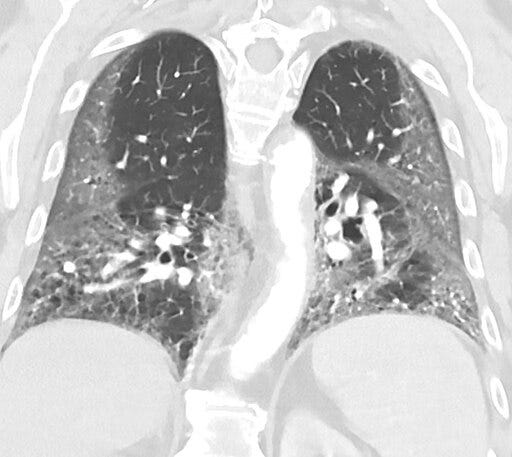
A CT scan of a patient with pneumonia caused by COVID-19. Image by Hellerhoff. Permissions: WikiCommons CC-BY-SA-3.0
Decoding a single image is hard enough; imagine trying to evaluate thousands of scans for unique features associated with a specific disease. It’s nearly impossible. As a result, tools such as AI and ML have been so important in further understanding the effects of COVID-19 on lung health.
Using AI to analyze chest CT scans for monitoring COVID-19 progression has been proposed before and has proven effective in distinguishing between COVID-19 and other types of pneumonia. Although most lung damage can heal over time, for some, the damage is irreversible, leading to permanent loss of lung function.
While many studies clearly conclude that COVID-19 can cause extensive lung damage, even resulting in lung distortion, very little work has been done on quantifying the severity of lung structure, shape, and morphology.
Researchers from the Georgia Institute of Technology and Emory University, would answer this question by using AI to analyze lung CT scans, revealing critical differences in lung shapes between mild and severe cases of infection.
What’s impressive is the quality of the dataset used in their deep learning models. Baseline CT scans were captured at the time of COVID-19 diagnosis, providing a standard foundation for analysis. Over 3,443 CT images were evaluated from four independent sources. This database was further split into three populations: healthy (no COVID-19), mild COVID-19 (no ventilator required), and severe COVID-19 (ventilator required).
The results showed that severe cases often have noticeable changes in the areas of the lungs near the centre of the chest, known as the mediastinal surfaces. Think of these surfaces as the inner walls of your lungs that are close to your heart and central airways.
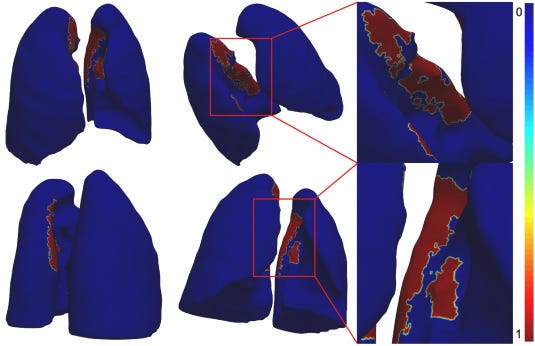
Lung shape differences were found at the mediastinal surface of lungs of severe COVID infection (Blue: No statistically significant shape difference between the populations. Red: Regions with statistically significant shape difference between the populations). Source from Hiremath et al. Permissions: CC-BY-NC-4.0
The mediastinal surfaces of the lungs showed substantial shape alterations in severe cases, while minimal changes were observed in mild cases. The figure above illustrates areas (in red), where permanent lung deformities and loss were most prevalent for those with serious infections.
Due to these deformities, their statistical analysis revealed significant volume differences among healthy, mild, and severe patients. Even when the data is split between males and females, the average lung volume clearly decreases with more severe infections.
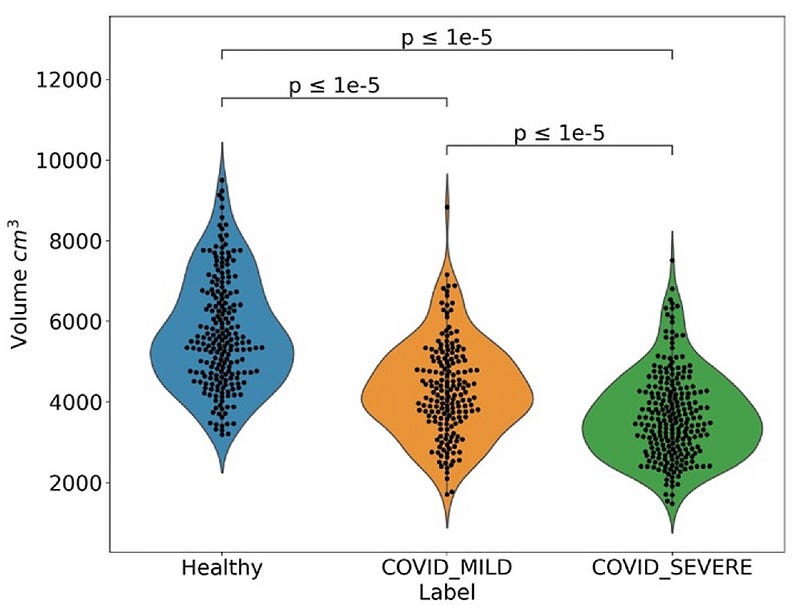
The plot shows that as the severity of COVID-19 disease increases, the lung volume decreases. Source from Hiremath et al. Permissions: CC-BY-NC-4.0
Until this study, there hasn’t been any other research that looked at quantifying the level of lung deformity from COVID-19 infections. Understanding these changes has long-term implications on lung health.
For example, changes in lung shape could impact function by accelerating aging. Other studies have also noted that persistent damage in patients with severe COVID-19 has led to fibrosis and permanent loss of lung function.
While recent use of AI-based models have been developed to predict COVID-19 severity, with some integrating CT-based approaches, this study presents a highly accurate alternative by examining the physical features of the lungs.
Challenges and prospects of AI-assisted COVID-19 CT scans
In terms of its practical use, my opinion is that this method, as a quick diagnostic test, would be inefficient. At least here in Canada, getting a CT scan starts with a referral from a doctor, then booking an appointment, and finally receiving the service at your allotted time. It’s a long process.
In the event of another outbreak, the burden for testing each person is too high. The throughput is significantly lower compared to other methods such as the standard PCR test, or the rapid test. However, if we can seamlessly integrate this technology for targeted testing to identify a patients’ needs for ventilators, it could become a vital tool.
Regardless, the implications of this research are still impressive and contribute to our continued understanding of this virus. It reveals how much irreversible damage it can cause, reminding us COVID-19 isn’t comparable to a simple cold.
Beyond that, what excites me most about this research is its potential application in studying other pulmonary diseases such as asthma, pulmonary fibrosis, and even lung cancer. Early insights offer benefits such as preemptive intervention, tailored treatments, and disease management.
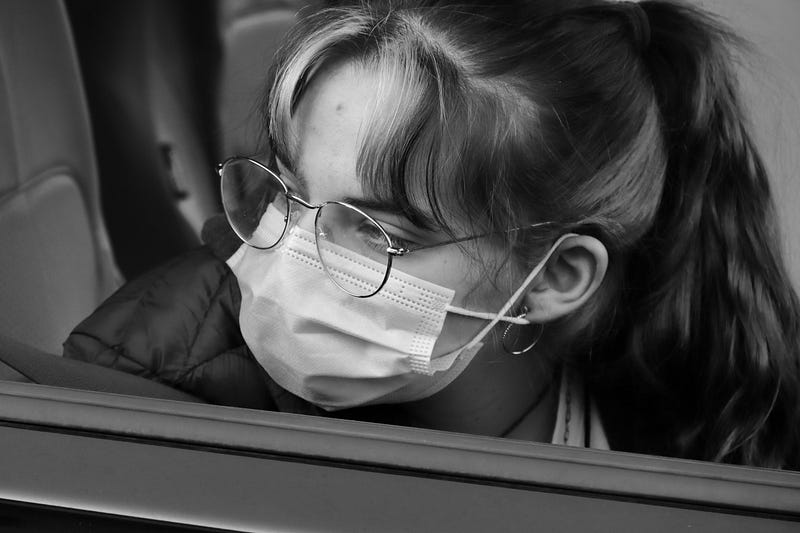
Photo by Manny Becerra on Unsplash
The pandemic might feel like a thing of the past, but its impact on our lives is undeniable. We’ve navigated through polarized politics, adapted to new norms, and shown our resilience.
Even if the pandemic has ended, we can’t forget the devastation COVID-19 has caused around the world. Our journey to understanding and overcoming this virus is far from over.
Sure, the process might be cumbersome now, but the importance of continued research cannot be overstated. By advancing our knowledge and integrating technologies such as AI, each discovery can open doors to new treatments and better prepare us for the next inevitable outbreak.
If you liked the article, subscribe for more AI in Healthcare and Biotech News!

What content do you want to see more of? |
Reply